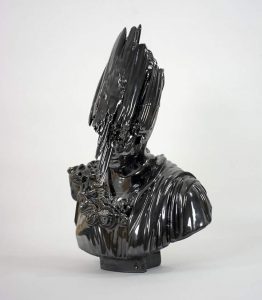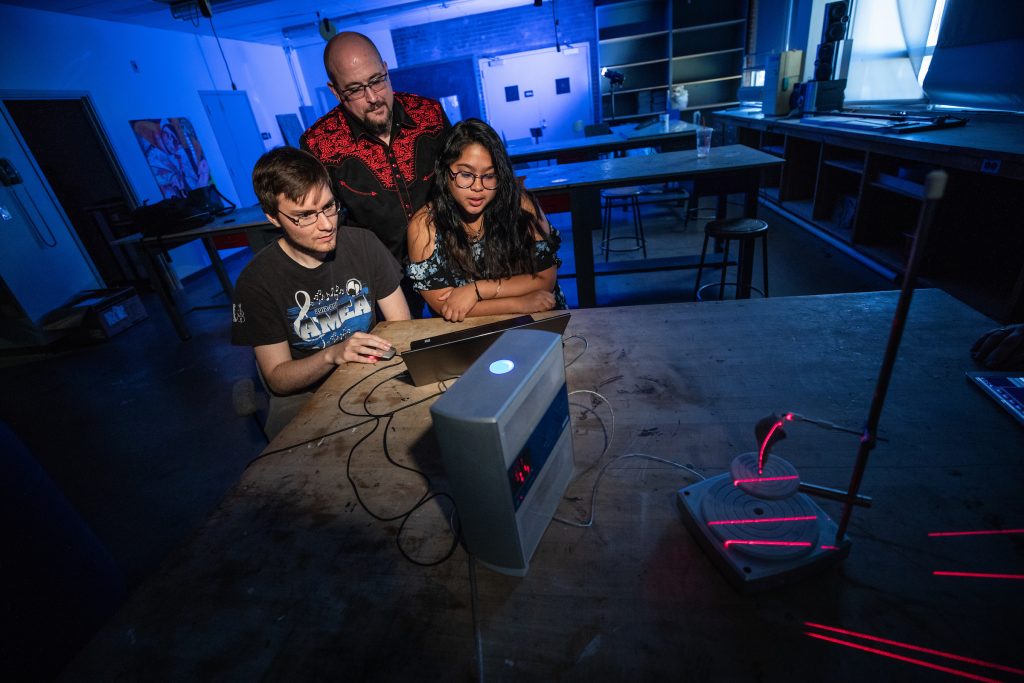The School of Art at Northern Arizona University has created a New Media Art degree emphasis, which includes applied sciences and creative pursuits to help students explore new ideas. The emphasis will launch in Fall 2019, but classes are available now.
“New Media Art is situated between the critical and creative thinking found in studio arts and the analytical and research thinking found in non-traditional art areas,” said David Van Ness, senior lecturer and new media coordinator. “We are looking for students who are innovators, inventors, mad scientists and artists with beyond traditional practices.”
The emphasis will allow students to explore ideas and characteristics of artist expression by analyzing and interpreting expression in methodical detail, solving problems using technology and generating innovative multimedia artwork. Artists can express themselves through sculpture, performance, video, digital visualization and biotechnology.
Video, 3-D printed sculpture, stop-motion animation, robotics and using technology connecting performances with audiences are all types of new media art students and faculty are creating at NAU already. Specific faculty and student projects include 3-D printing to repair a turtle’s damaged shell, reconstructing a cholera victim’s skull from the 1700s, creating digital art from visualizations based on ocean tidal patterns and analyzing DNA with classical music.
Professors and students at NAU also are using CRISPR gene editing tools to create generative musical compositions. Van Ness will use Beethoven’s piano concerto to code the musical score into chromosomal sequences, which will be programmed into a created embryo-like cell.

In another project, biometric data and social media data will be used to create something akin to a 3-D model of an MRI, then cells will be gathered from the individual being studied and a sculpture will be created. The concept, Van Ness said, is to create a form of portraiture that isn’t based in the visual.
The new degree emphasis allows students to pursue two liberal studies electives and two additional electives to expand their research and deep exploration into other areas.
“NAU is opening doors to creating new types of art,” said student Mikayla Wilson, who plans to apply new video and animation technology to her future teaching career. “I hadn’t known about these tools or methods before I was in these classes.”



